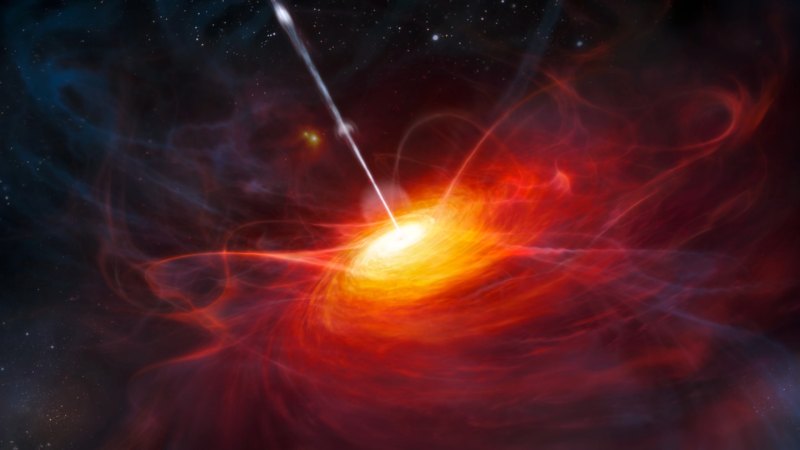
The first glimpse of starlight from a galaxy hosting one of the most distant quasars known has revealed an astronomical wonder.
Quasars – extremely bright galactic nuclei – owe their brightness to the intense heat that results when gas swirls around a supermassive black hole. The black hole powering a quasar 13 billion light-years from Earth is half as massive as all the stars around it — a record high ratio for a quasar host galaxy, astronomers report in a paper submitted Oct. 14 to arXiv.org .
All previous attempts to view the host galaxy with the Hubble Space Telescope have failed. So astronomers scored with the James Webb Space Telescope, or JWST, instead (SN: 20/6/23).
The quasar, named ULAS J1120+0641 and the fourth most distant known, passes its galaxy by more than 100 times (SN: 6/29/11). “This makes it very difficult to measure [light] from the host galaxy,” says team member Minghao Yue, an astronomer at MIT. But over the 13 billion years that the quasar’s light has been speeding toward us, the expansion of the universe has stretched the light’s wavelengths by more than 700 percent. Thus, we see the quasar’s visible light at infrared wavelengths, where JWST conducts most of its observations.
The black hole powering the quasar, astronomers find, is 1.4 billion times more massive than the sun, consistent with previous estimates. What is new is the discovery of the host galaxy, whose stars contain up to 2.6 billion solar masses. This is small compared to the Milky Way, whose stellar mass is about 60 billion solar masses. But by the time we see the quasar, about 750 million years after the Big Bang, all galaxies were young, and even most of the largest galaxies had fewer stars than modern star-like giants.
What really sticks out is the black hole’s relative weight: It weighs in at 54 percent of its galaxy’s stellar mass, compared to only about 0.1 percent for the central black holes in modern giant galaxies. “This means that the co-evolution between black holes and their hosts in the early universe must be very different” from modern galaxies, Yue says.
Harvard University astronomer Avi Loeb agrees. He thinks that the quasar’s radiation suppressed star formation in the host galaxy by heating its gas (SN: 16.8.24). To collapse and form stars, the interstellar gas must be cold; otherwise, the outward push of thermal pressure prevents the gas from collapsing into new stars. “If I had to guess,” he says, “the gas isn’t cold enough to make many stars.”
The quasar will be turned off in its future, Loeb says. Then the gas in the surrounding galaxy can cool and form stars, increasing the galaxy’s stellar mass. If we were to see the galaxy as it is today, its black hole mass relative to its stellar mass might very well match that of the giant galaxies near us.
Unfortunately, Yue says, the new work doesn’t address the mystery of how these supermassive black holes grew so quickly after the Big Bang (SN: 18/1/21). But observations show that another galaxy is colliding with the one waiting for the quasar. The collision probably pours gas into the black hole, increasing its already considerable mass and also igniting the quasar so that astronomers can see it at such a great distance.
#distant #quasars #black #hole #surprisingly #large #galaxy
Image Source : www.sciencenews.org